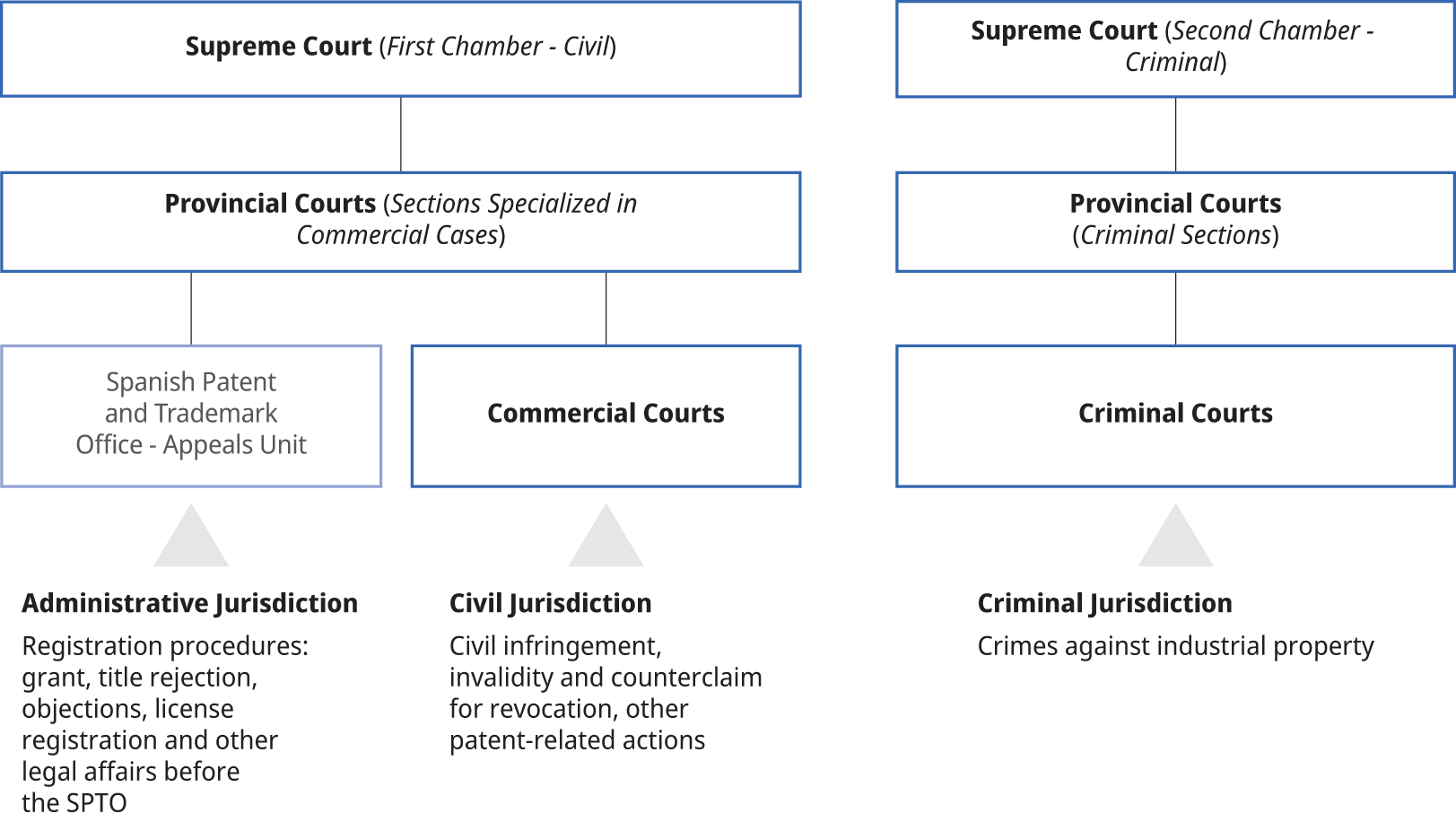12.3.1 Judicial administration structure
The Spanish Constitution provides that exercise of the judicial power for all types of trials, judgments and enforcement of judgments rests exclusively with juzgados and tribunales as defined by the laws and in accordance with the rules of competence and procedure set forth therein. The term juzgados refers to courts composed of a single judge. The term tribunales refers to collegial bodies composed of at least three judges.
The judicial function is performed solely by professional judges forming part of the judicial service, which is divided into three categories: Supreme Court Justice, Magistrado (Senior Judge) and Judge. Courts in Spain are composed exclusively of judges with judicial training.
The Spanish Judiciary is governed by the General Council of the Judiciary. This body is recognized as having all of the powers necessary to apply the rules governing the exercise of functions performed by members of the Judiciary, particularly in matters pertaining to appointments, promotions, inspections and disciplinary measures.
The Constitution also establishes principles for the governance of judicial activities. One such principle, jurisdictional unity of the National Judiciary, underlies the organization and functioning of all Spanish courts.
The ordinary courts are classified into four jurisdictional divisions: civil, criminal, administrative and social.13 The Supreme Court, with jurisdiction throughout Spain, is the highest judicial body for all of these divisions, except where constitutional guarantees are concerned, for which that position is occupied by the Constitutional Court.
Within each of these jurisdictional divisions, specialized courts have been created by various legislatively authorized means to deal with specific matters. Such is the case for courts specializing in industrial property cases, which are part of the courts specializing in commercial matters and forming part of the civil jurisdictional division.
The Organic Law on the Judiciary14 provides for the establishment, operation and governance of the courts as well as rules governing the exercise of functions performed by members of the Judiciary, including judges and administrative staff. It also regulates the election, composition, powers and operations of the General Council of the Judiciary and the exercise of functions performed by General Council members.
Figure 12.2 The judicial administration structure in Spain
